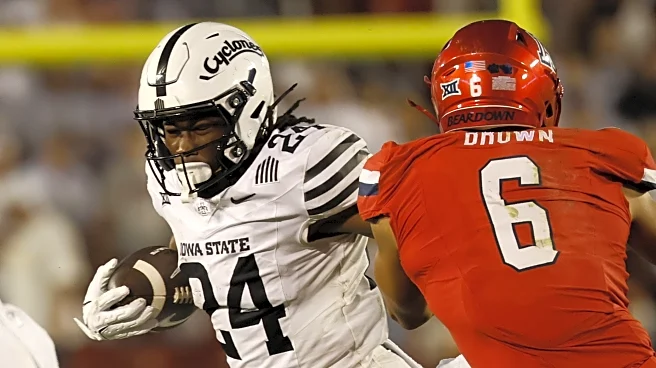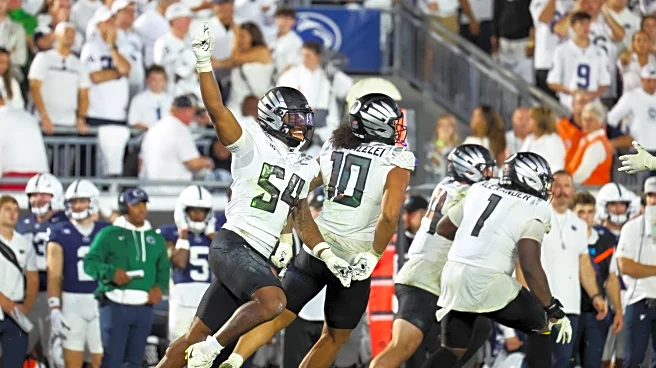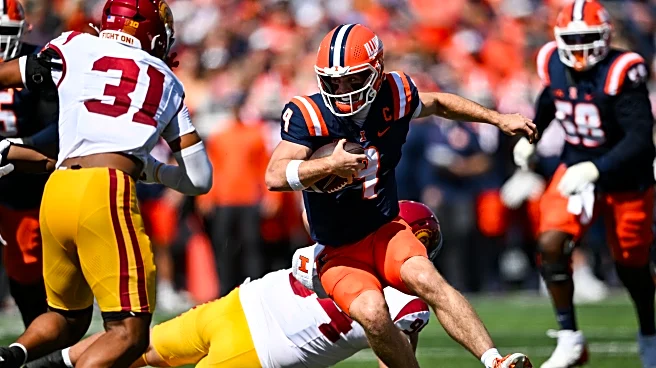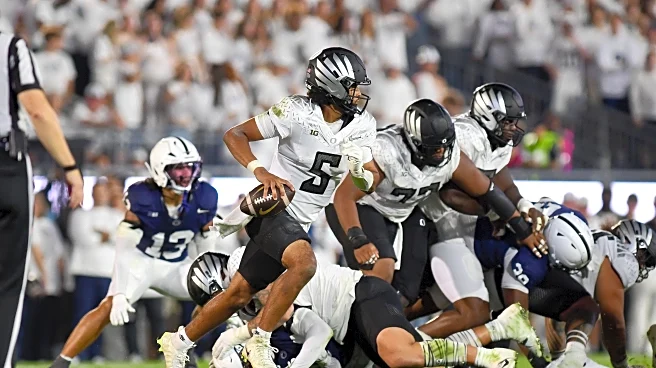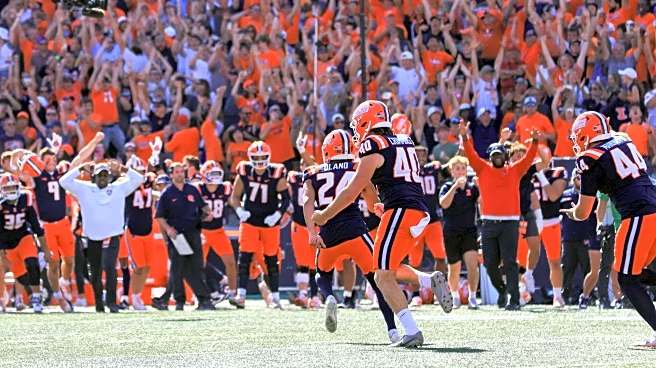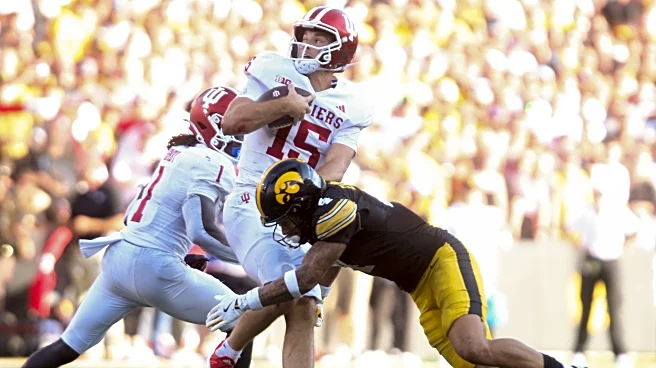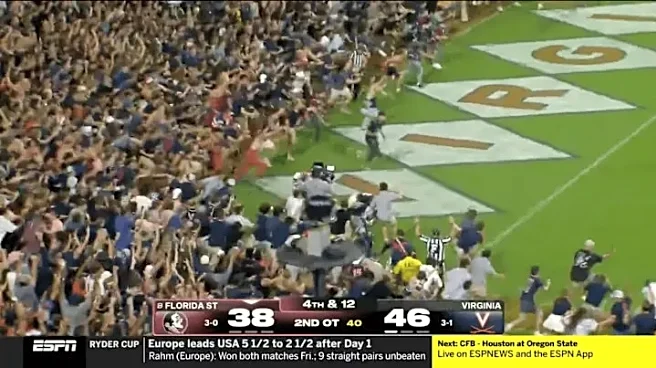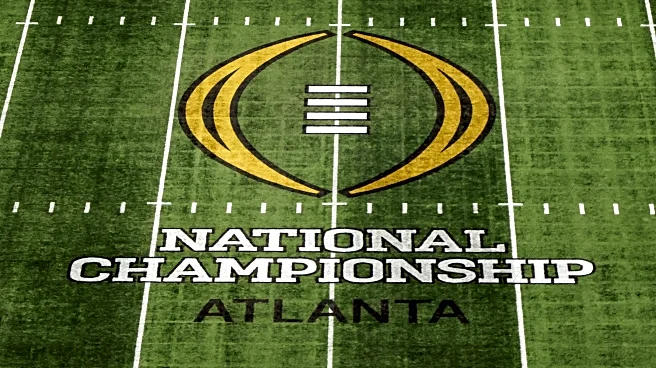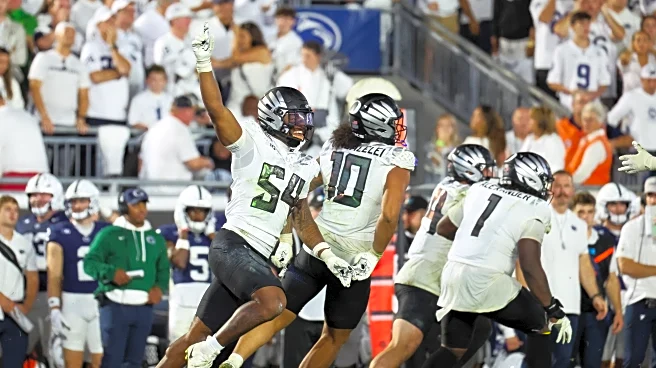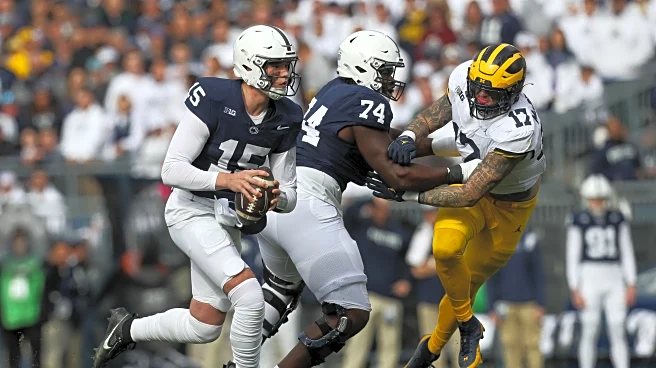For the first time since 2014, Rutgers’ offense truly looks like it belongs in the Big Ten. Quarterback Athan Kaliakmanis ranks second in passing in the Big Ten, with just shy of 1,400 passing yards and
nine touchdowns to just two interceptions through five games.
The receiving room has the third and fourth-leading pass-catchers in the conference in Ian Strong and KJ Duff. DT Sheffield is not far behind at eighth, with Strong and Duff each over 400 yards receiving, while Sheffield has over 325.
In the run game, Antwan Raymond has taken over the mantle left by Kyle Monangai (and Isiah Pacheco before him), ranking third in the Big Ten with 471 yards on a conference-leading 87 carries. Although CJ Campbell is out for the year, Ja’Shon Benjamin and the return of Sam Brown provide the Scarlet Knights with a decent rotation.
Putting it all together, the offensive line got off to an impressive start, creating holes for Raymond and the running backs while allowing Kaliakmanis ample time to throw to his big-play receivers downfield. This is an offense the Scarlet Knights have not had in at least a decade, and it is giving Rutgers a chance to win week in and week out by simply outscoring opponents, which is an identity that Rutgers has not had in at least a decade.
These should be the headlines of the season. Instead, it’s being overshadowed because the rest of the team keeps repeating the same mistakes, and new ones are piling on. The defense has been poor against both the run and pass all season; the special teams (another usual Rutgers strength) has been doing much more harm than good, and the team is continuing to be undone by untimely penalties, injuries, and crucial mistakes in all three phases of the game. These injuries have crippled the playing ability of entire position groups, in particular the offensive line.
Run Defense Failing To Hold Up
Both quarterbacks and running backs have been finding space to run all over the Scarlet Knights, consistently reaching the second level with little resistance. Ohio’s Parker Navarro and Miami (OH)‘s Dequan Finn both led all ball-carriers in rushing as quarterbacks, which just goes to show where the run defense was this season.
Even Norfolk State’s two leading rushers averaged north of six yards per carry. Iowa took advantage as well, with three of its running backs having a carry of at least 10 yards, and Mark Gronowski barrelling his way into the end zone three times in addition to ten other rushes for a total of 55 yards on 13 carries.
To be fair, Rutgers largely shut down the Minnesota run game, although that was aided by the Gophers’ top two running backs being out. But before that, the Scarlet Knights let every team run on them, including Norfolk State. With some of the better backs in the Big Ten remaining on the schedule, such as Washington’s Jonah Coleman, the Knights will have to make sure they have tightened things up on the ground for good.
Pass Defense Allowing Deep And Intermediate Completions
If that was not bad enough, opponents are carving up Rutgers through the air as well, both in the deep and intermediate parts of the field. Chase Hendricks of the Bobcats had nine catches for 115 yards, which set the tone for Dequan Finn to have two 60-yard completions to Keith Reynolds and Kam Perry, which set up two Miami (OH) touchdowns. For a conservative MAC offense like the RedHawks to attack Rutgers in that way, it just showed where this defense was, and things have only seemed to get worse in Big Ten play.
In Big Ten play, Iowa shocked the Rutgers crowd with Gronowski finding Dayton Howard for a 42-yard strike, while Drake Lindsey launched a 78-yard bomb to Jalen Smith that sparked a Gophers touchdown. This is becoming a weekly occurrence for the Scarlet Knights, with wide receivers exposing the gaps in Rutgers’ secondary.
In the middle of the field, receivers and tight ends are often catching the ball ahead of the sticks with wide-open space to run after the catch, turning simple plays into chunk yardage. Linebackers are losing track in the intermediate zones, and tackling is poor throughout. Those breakdowns aren’t just costing yards; they’re breaking momentum and putting the Scarlet Knights constantly on their heels. Lindsey and the Gophers took advantage of the Rutgers defense with an uptempo offense, and the Scarlet Knights clearly could not keep up.
On top of all that, the defensive line is failing to generate pressure and hardly bringing down the quarterback. Although Eric O’Neill and Bradley Weaver have shown flashes of talent in conference play, Weaver only has 2.5 sacks while O’Neill has just 1.5 so far. The Scarlet Knights have just eight total sacks in five games, while the offensive line allowed seven against the Gophers alone. Some of that may be due to the high number of injuries, but a larger part of it is due to poor scheming and execution on both sides of the line of scrimmage.
Special Teams: From Strength To Weakness
Special teams were once what made Rutgers special. Now, they are actively hurting the team’s chances to win football games. Kicker Jai Patel started the year by setting the most consecutive makes streak at Rutgers. Since then, he has missed one field goal off the crossbar while having two kicks blocked. Patel has also had two extra points blocked, part of which is due to the poor protection and a questionable no-call on a possible leverage in the Iowa game, but more of it has to do with the low angle he is taking on his kicks.
After special teams made waves by scoring three touchdowns off of blocked or muffed punts in the first three games, they have been remembered for all the wrong reasons since. It’s not just Patel’s kicks being blocked, but the kickoff return coverage has been extremely faulty.
Not only did they allow an easy return touchdown to Iowa’s Kaden Wetjen on the opening kickoff, but they also almost allowed another one right before halftime, tracking down Wetjen as he neared the end zone before the whistle blew the half over. And then against the Gophers, the same situation nearly unfolded, with a long return from Koi Perich giving the Gophers’ kicker Brady Denaburg a chance to cut into Rutgers’ lead before halftime.
Denaburg missed the 50-yard attempt wide right, but Rutgers will not keep getting lucky with these types of mistakes on special teams.
Mistakes Are Not Getting Fixed While New Ones Pop Up
As egregious as some of these mistakes are, if they were a one-time occurrence, fans could live with them. However, they’re being repeated, and worse, they’re multiplying. From the blocked kicks to the long returns to the poor coverages, instead of being corrected, they are becoming more noticeable not only to us, but also to our opponents. By failing to fix the mistakes that are being made, Rutgers is more susceptible to future opponents taking advantage and attacking the Scarlet Knights in their weakest spots.
Throwing in Dane Pizzaro to attempt his first college field goal was just too tall an ask from 56 yards out, but that was the situation the Scarlet Knights put themselves in last Saturday. The crowd noise is no valid excuse, as Schiano even mentioned the team practicing in similar conditions. Minnesota is also far from the loudest road environment Rutgers will see this year, with games at Husky Stadium and Ohio Stadium on the docket, in addition to a Midwest road swing at Purdue and Illinois.
For all that the offense has done right, untimely interceptions and poor blocking have cost Rutgers two games in Big Ten play. After getting off to scorching starts against each quality opponent they have faced, they have cooled off significantly in the second half. Ohio, Minnesota, and Iowa have each made better second-half adjustments, with the Bobcats being the only team to fail on their comeback attempt (although just barely). In the Big Ten, though, that is just not good enough to win.
Possible Solutions?
We have broken down the issues with the team; now it’s time to ponder possible solutions. Keep in mind, none of us here are coaches, and we are just speculating about what we would like to see based on our knowledge.
A Defensive Retool
Last season, Rutgers’ defense looked just as bad for a spell as it has so far this season. The difference is that the team had a lot of injuries and was reeling from that. Either way, during the bye week, they stripped their defensive scheme down to the studs and rebuilt it from the ground up. The defense proceeded to look much better after that. Something similar has to be done here because what they are currently trying has just not worked out. If this retool does not work out, other options might have to be explored to fix the defense for next season, if you catch our drift.
Changing The Defensive Playcaller?
Something else that could be done would be to remove Robb Smith from defensive playcall duties. Although Greg Schiano has gone as far as firing offensive coordinator Sean Gleeson for poor performance in 2022, the Smith defense has shown improvements, particularly in the run game, and a firing would not likely happen until the offseason. A less extreme but still suitable solution here would be to remove Smith from playcalling duties.
With Zach Sparber as co-defensive coordinator, he could easily step in to call the defensive plays. Secondly, Greg Schiano himself is a defensive-minded coach. It is hard to see the defense regressing further, and any change may be a good change. Although it may be enough to rebuild the defensive scheme once again this year, changing up the defensive playcalling may provide the defense with the spark it needs.
Benching Jai Patel?
The Rutgers kicker has had a hard time getting his kicks in the air enough for them to go past the line of scrimmage. Do it once, that’s a freak accident. Do it four times, and that becomes a trend. Rutgers needs reliability out of its kicking game, and that won’t come if their kicks can’t get up in the air high enough not to get blocked. Maybe it’s time to see what Dane Pizzaro can do? After all, Pizzaro may have missed from 56 yards out, but he had more than enough leg on his miss to show that he will likely not have the same problems as Patel from closer distances.
Rutgers’ Season And Long-Term Growth Are At Risk
This isn’t just about losing to elite Big Ten powers or claiming that “signature win” that would signal that Rutgers has taken the next step. By performing like this, Rutgers risks dropping even more winnable games against the bottom to middle of the conference, the very matchups that determine whether the program is climbing, stuck in neutral, or even taking a dreaded step back in year six of the Greg Schiano 2.0 era.
With Rutgers dropping two games against Iowa and Minnesota, they will have to find a way to beat Washington or Illinois while taking care of business against both Maryland and Purdue just to go bowling. If the Knights don’t close down passing lanes, clean up special teams, and stop making boneheaded mistakes across all three phases, this season could be lost altogether.
Whatever decisions the Scarlet Knights decide to make during this bye week, they must make sure they are the right ones. Otherwise, they are risking not only having a lost season this year, but throwing the entire rebuild and trajectory of the program into question. Especially with an offense this good, having the usual strengths of Rutgers football fail to improve from their mistakes and set the entire program back would be truly unacceptable.

